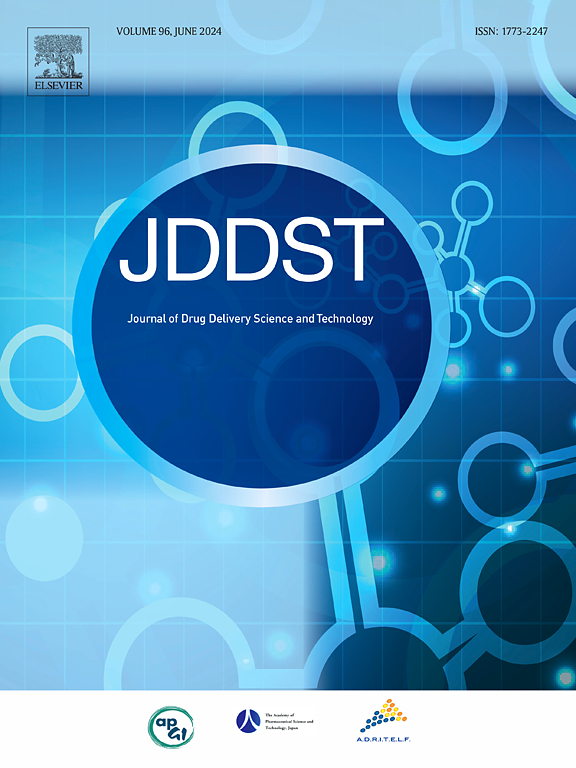Amorphous solid dispersion formulation of pimobendan for bioavailability enhancement: A comprehensive study on miscibility, interactions, and in vitro dissolution behavior
IF 4.5
3区 医学
Q1 PHARMACOLOGY & PHARMACY
Journal of Drug Delivery Science and Technology
Pub Date : 2025-04-03
DOI:10.1016/j.jddst.2025.106884
引用次数: 0
Abstract
Amorphous solid dispersions (ASDs) of poorly soluble pimobendan (PIMO) in cellulose matrices, including hydroxypropyl methylcellulose acetate succinate (HPMCAS-HG, HPMCAS-MG, HPMCAS-LG), polyvinylpyrrolidone-vinyl acetate (PVPVA64), and polyvinylpyrrolidone (PVPK30), were investigated, aiming to identify the optimal polymer to enhance its solubility and stability of the drug product. The results indicated that the miscibility between PIMO and the selected polymers can be predicted by Hansen solubility parameters and Flory-Huggins interaction parameters, with the ranking order of PVPVA64 > PVPK30 > HPMCAS. Fourier transform infrared (FTIR) spectroscopy analysis revealed significant interactions between PIMO and these polymers. Recrystallization inhibition and dissolution performance were ranked as HPMCAS-HG > HPMCAS-MG > HPMCAS-LG > PVPK30 > PVPVA64. Additionally, the results also indicated that HPMCAS-HG had superior stability compared to PVPVA64 and PVPK30 under elevated humidity, as confirmed by differential scanning calorimetry (DSC) and powder X-ray diffraction (PXRD) analysis. These findings provide a theoretical basis for selection of the optimal polymer for design of PIMO ASDs.

求助全文
约1分钟内获得全文
求助全文
来源期刊
CiteScore
8.00
自引率
8.00%
发文量
879
审稿时长
94 days
期刊介绍:
The Journal of Drug Delivery Science and Technology is an international journal devoted to drug delivery and pharmaceutical technology. The journal covers all innovative aspects of all pharmaceutical dosage forms and the most advanced research on controlled release, bioavailability and drug absorption, nanomedicines, gene delivery, tissue engineering, etc. Hot topics, related to manufacturing processes and quality control, are also welcomed.

 求助内容:
求助内容: 应助结果提醒方式:
应助结果提醒方式:


